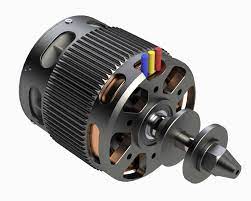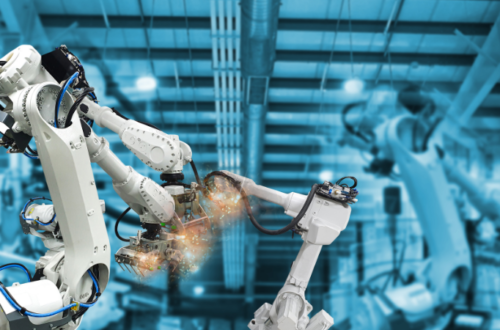The global brushless DC motor market share has witnessed significant growth, and its upward trajectory is expected to continue with an estimated compound annual growth rate (CAGR) of 7.8% from 2024 to 2032. Brushless DC motors (BLDC motors) have become increasingly popular across various sectors due to their efficiency, controllability, and longer lifespan. These motors are widely used in air conditioning systems, washing machines, consumer electronics, computer fans, hard disk drives, and vacuum machines. Their energy-efficient performance has resulted in substantial power savings, making them an integral part of modern-day electrical equipment.
Key Benefits of Brushless DC Motors
- Efficiency and Power Savings: One of the most notable benefits of brushless DC motors is their high efficiency. BLDC motors eliminate energy losses caused by friction and wear, offering superior power conversion. This translates into less heat production and lower power consumption, making them ideal for applications where energy efficiency is paramount.
- Longevity and Durability: BLDC motors offer an extended operational lifespan. Since these motors don’t have brushes, there is less wear and tear, leading to reduced maintenance needs and enhanced reliability.
- Better Controllability: These motors provide precise control over speed and torque, making them suitable for applications requiring accurate movement control. This characteristic has led to their extensive use in robotics, automation, and other high-precision industries.
- Compact Size and Light Weight: Brushless DC motors are compact and lightweight, which makes them ideal for applications requiring small and powerful motors, such as drones, electric vehicles, and portable electronics.
- Lower Noise and Vibration: Due to their design, BLDC motors generate less noise and vibration compared to traditional motors. This feature makes them suitable for household appliances and medical equipment where quiet operation is necessary.
Key Industry Developments
- The rapid expansion of consumer electronics, electric vehicles, and automation industries has propelled the demand for brushless DC motors.
- Several companies are innovating by integrating advanced sensor technologies into BLDC motors, enhancing their precision and energy-saving capabilities.
- Governments and industries worldwide are promoting the adoption of energy-efficient appliances, further driving the demand for BLDC motors.
- The rise of renewable energy projects, such as solar panels and wind turbines, has also seen an increased deployment of BLDC motors in these applications due to their efficiency.
Driving Factors
- Technological Advancements: With ongoing research and development, BLDC motors are continuously being optimized for higher efficiency and performance, leading to greater demand in industries such as robotics, aerospace, and automation.
- Growing Demand for Energy-Efficient Appliances: Rising awareness about the environment and increasing electricity costs have prompted a shift toward energy-efficient products. BLDC motors, with their low energy consumption, play a crucial role in meeting this demand.
- Electric Vehicles Market Boom: The global push toward electrification in transportation has seen a surge in demand for electric vehicles (EVs). BLDC motors, with their energy efficiency and ability to handle varying loads, are pivotal in EV applications.
- Adoption in Medical Equipment: In the healthcare sector, BLDC motors are used in devices like ventilators and surgical robots due to their precision and quiet operation.
COVID-19 Impact
The COVID-19 pandemic disrupted supply chains, leading to delays in manufacturing and shipment of brushless DC motors, particularly in the automotive and electronics sectors. However, the pandemic also heightened the demand for medical equipment, such as ventilators and diagnostic machines, which use BLDC motors. Additionally, as economies began to recover, there has been a renewed focus on energy efficiency, bolstering the demand for brushless DC motors in various applications.
Restraining Factors
- High Initial Costs: The high cost of brushless DC motors compared to traditional motors is a major barrier to adoption, particularly in cost-sensitive markets. Although the long-term energy savings can offset these costs, the upfront investment remains a hurdle for some industries.
- Complexity in Manufacturing: The complexity of producing BLDC motors due to their sophisticated design and the requirement for advanced electronic controllers can hinder mass production, especially for smaller companies.
- Availability of Alternatives: The availability of other types of motors, such as stepper motors and servo motors, which offer similar functionalities at a lower cost, poses a challenge to the growth of the BLDC motor market.
Market Segmentation
The brushless DC motor market can be segmented into several categories based on power rating, rotor type, and application:
- Power Rating: Low-power (up to 10 kW), medium-power (10 kW to 50 kW), and high-power (above 50 kW) brushless DC motors.
- Rotor Type: Inner rotor and outer rotor motors.
- Applications: Automotive, consumer electronics, industrial automation, healthcare, aerospace, and others.
Market Outlook and Trends
The global brushless DC motor market is projected to grow steadily through 2032, with increasing demand across various sectors. The rising trend of automation in manufacturing, coupled with the growth of electric vehicles, will continue to be major growth drivers. Emerging technologies like artificial intelligence and the Internet of Things (IoT) are also expected to spur the adoption of BLDC motors in advanced applications. Additionally, the miniaturization of electronic components is driving the development of smaller, more efficient motors for portable devices.
Regional Analysis and Insights
- North America: The region is expected to be a significant market for brushless DC motors due to the robust growth of the automotive and healthcare sectors. The adoption of electric vehicles and energy-efficient appliances is driving market expansion in the U.S. and Canada.
- Asia-Pacific: Asia-Pacific is projected to see rapid growth in the brushless DC motor market, driven by the booming consumer electronics industry in China, India, and Japan. The region’s automotive industry is also a key contributor to this growth.
- Europe: Europe is another key market, particularly in countries like Germany and the U.K., where the adoption of electric vehicles and renewable energy projects is accelerating demand for energy-efficient motors.
Major Key Players
- Nidec Corporation
- ABB Ltd.
- AMETEK, Inc.
- Johnson Electric Holdings Limited
- Siemens AG
- Maxon Motor AG
- Allied Motion Technologies, Inc.
- Schneider Electric SE
- Toshiba Corporation
- Regal Beloit Corporation
Opportunities and Challenges
- Opportunities: The transition to electric vehicles presents a significant opportunity for BLDC motors, as their high efficiency and compact size make them ideal for EV powertrains. Additionally, the rise in automation and robotics across industries opens new avenues for BLDC motors in precision applications.
- Challenges: High manufacturing costs and competition from other motor technologies remain challenges. Furthermore, the need for specialized controllers adds complexity and cost, which can be a barrier for widespread adoption.
Scope and Sub-Category: Electrical Equipment and Appliances
In the sub-category of Electrical Equipment and Appliances, brushless DC motors are widely used due to their energy-saving capabilities. Devices such as air conditioners, refrigerators, washing machines, and other household appliances rely on these motors for efficient operation. In Electrical Devices, BLDC motors are key components in devices requiring precision and durability, such as hard drives, printers, and power tools.
The global brushless DC motor market is on a robust growth path, fueled by the increasing demand for energy-efficient and durable motors across various industries. As technological advancements continue to improve the performance and reduce the costs of these motors, their adoption is expected to grow further, particularly in sectors such as electric vehicles, consumer electronics, and healthcare. However, challenges related to cost and competition from other motor technologies remain.





